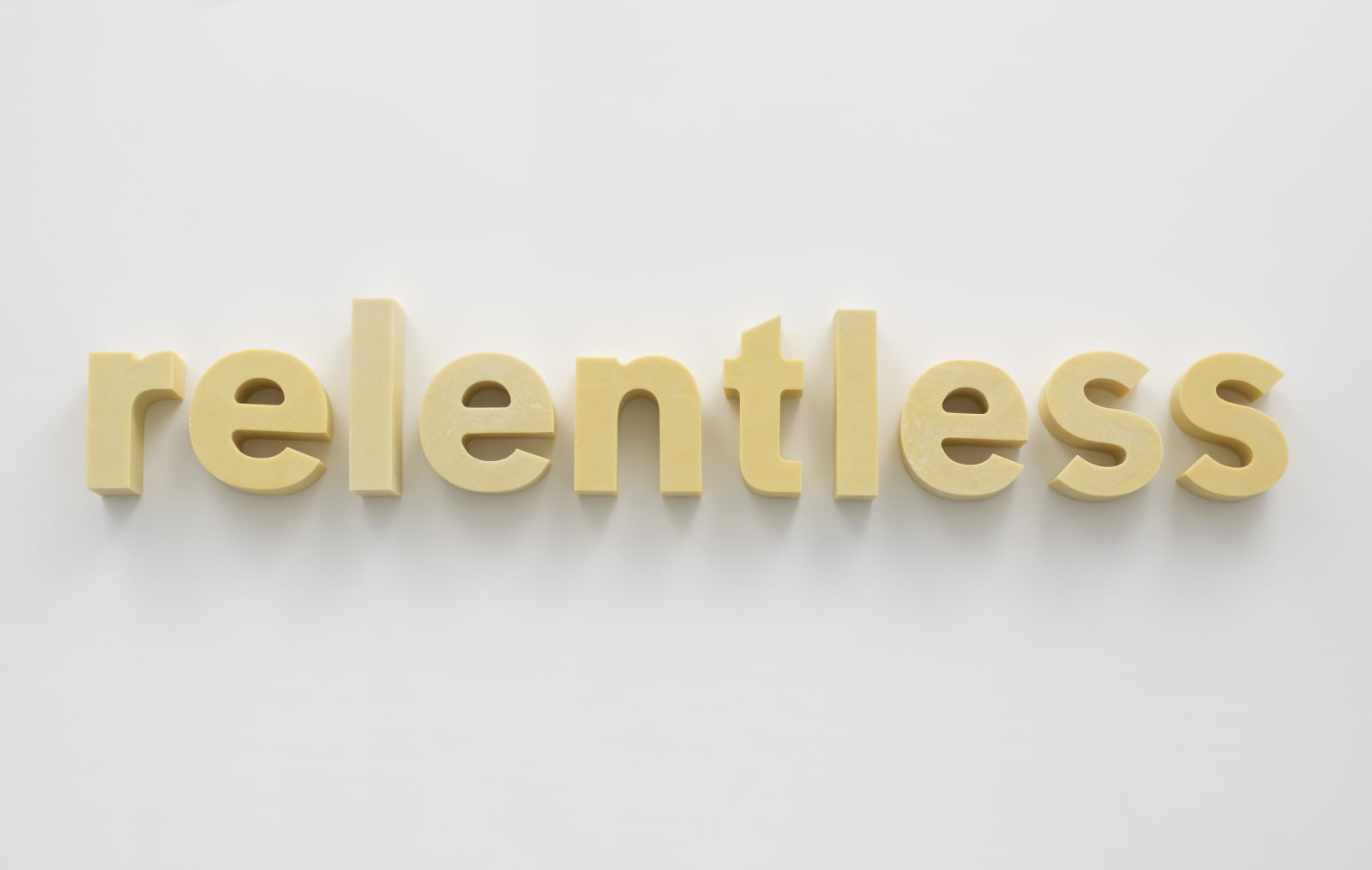-
Artworks



Relentless, 2021
Cocoabutter and beeswax8 x 44 x 2 in
20.3 x 111.8 x 5.1 cmEdition of 3 plus 2 artist's proofs$ 10,000.00Further images
Allana Clarke’s practice exposes the power of materiality, as she brings new life to materials that have held personal and/or historical ties to anti-Black sentiment, often related to society’s violent...Allana Clarke’s practice exposes the power of materiality, as she brings new life to materials that have held personal and/or historical ties to anti-Black sentiment, often related to society’s violent adherence to Western standards of beauty. In "This Will Be My Undoing: Living at the Intersection of Black, Female, and Feminist in (White) America", Morgan Jerkins writes, “the question that white people are asking is not Why can’t we all be human?, but Why can’t you be like us?” By repurposing materials such as hair bonding glue and cocoa butter, Clarke rejects such pressures, subverting the narratives of these products to create works that offer a path to transcendence and healing. To create her hair bonding glue sculptures, Clarke pours the material—hundreds of bottles of it—onto large mesh beds before allowing it to cure. The glue slowly dries from the top layer down, creating a sticky and unpredictable leathery surface at which point she springs to action, performing her gestures of pushing, pulling, pinching, ripping, and twisting. This performance results in large, three-dimensional wall-based sculptures with folds, ripples, and tears of various textures, each inextricably linked to the artist’s energy and physicality. Clarke’s cocoa butter works elicit a similar bond to her physical self. Individual letters are cast in rubber molds filled with cocoa butter, which are then assembled on the wall to share lines of the artist’s poetry. The text stems from her relationship to the material of cocoa butter itself, reflecting on Clarke’s experience of “rituals of alteration, indoctrinating [her] into a world that is anti-black.”
Clarke considers each interaction with cocoa butter and bonding glue an “energy transfer” in which she releases the object from the “burden of expectation.” Her process creates a space where she can engage her chosen material in an intimate dialogue without any pressure to conform to hegemonic standards. Now these materials can be used for healing instead of trauma. Her work explores the exciting terrain that opens up when the oppressed speak back to history. In both processes, the artist relies on time—waiting for the materials to coagulate before next steps are taken—a condition that coincidentally, or tellingly, embodies the wait and patience needed to attain transcendence.Exhibitions
Un/Common Proximity, James Cohan, 48 Walker Street, June 12 - August 13, 2021





